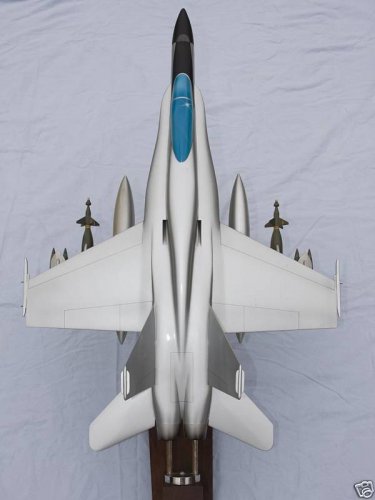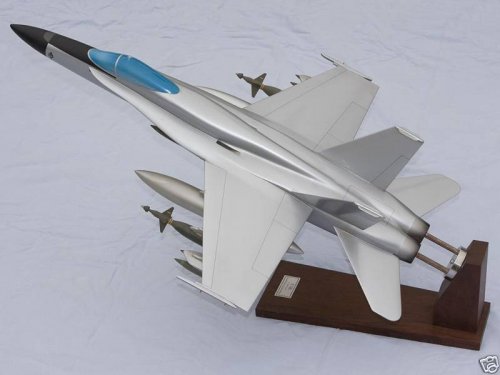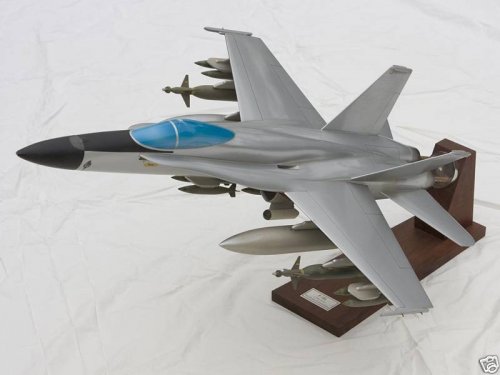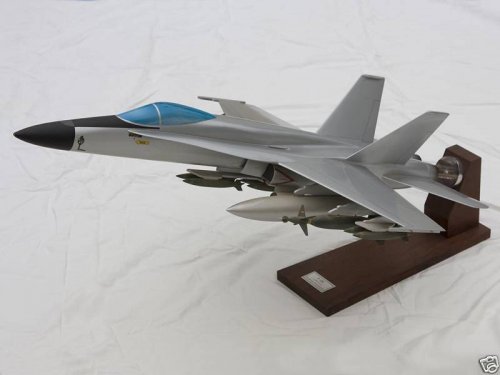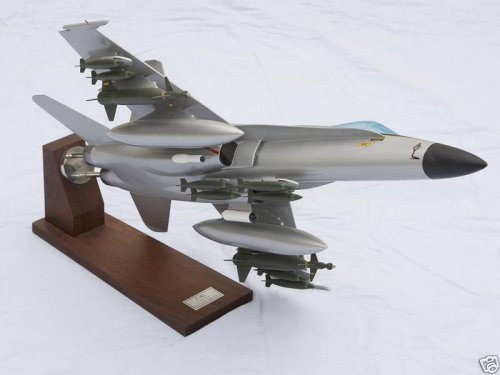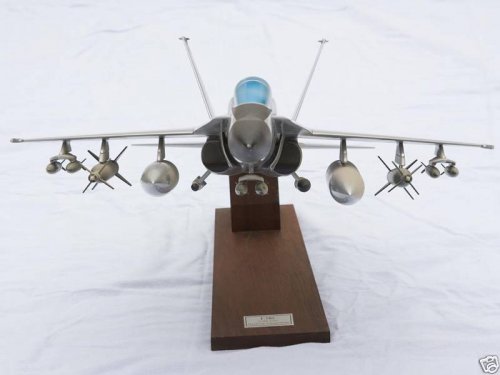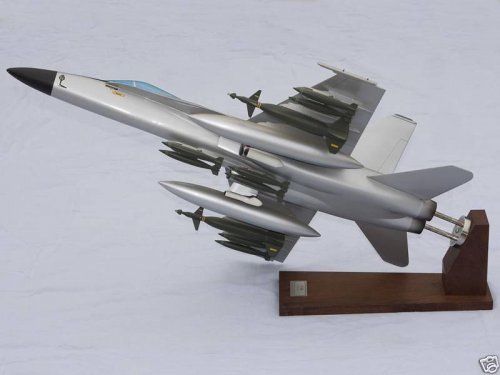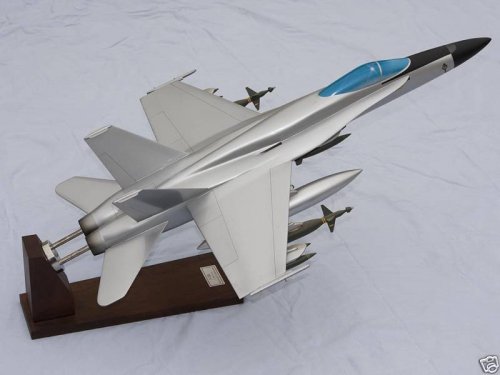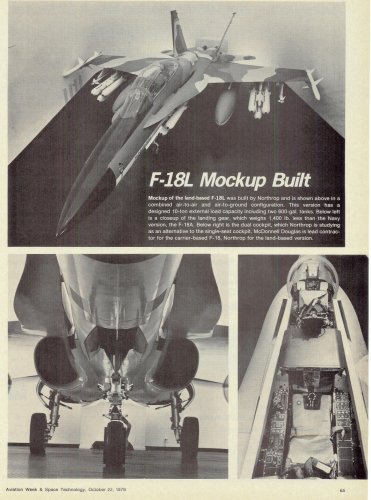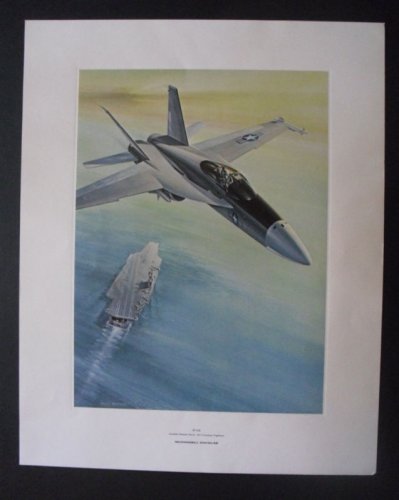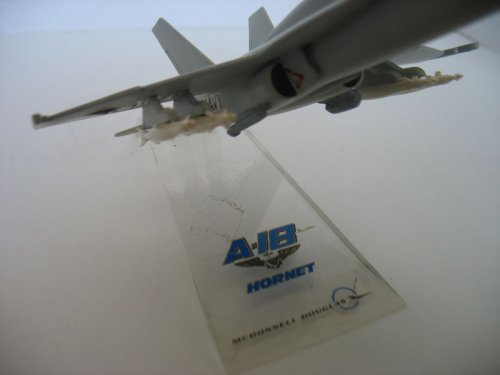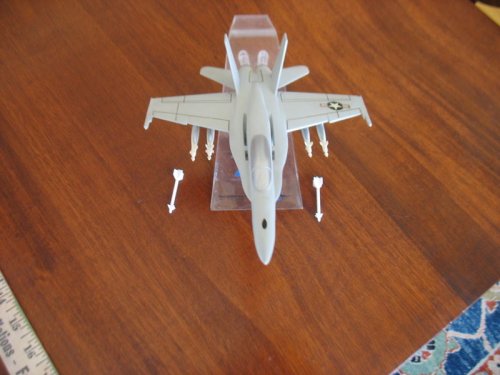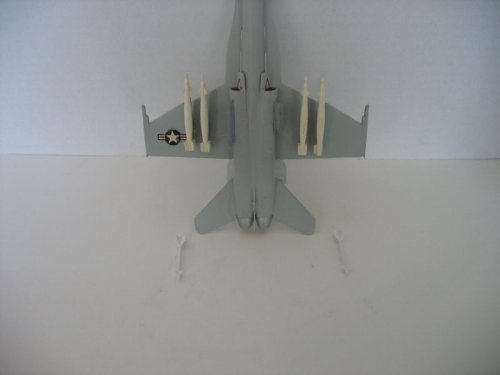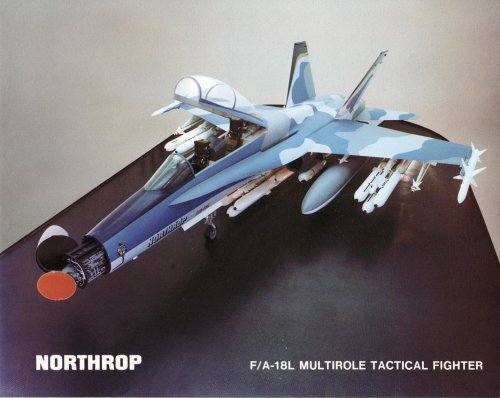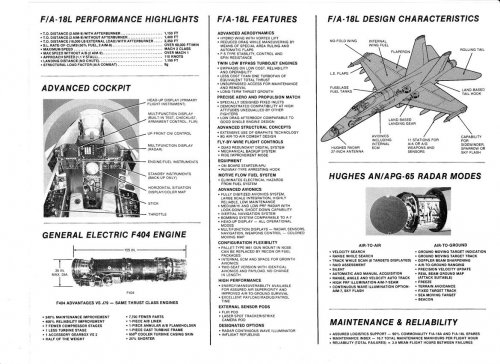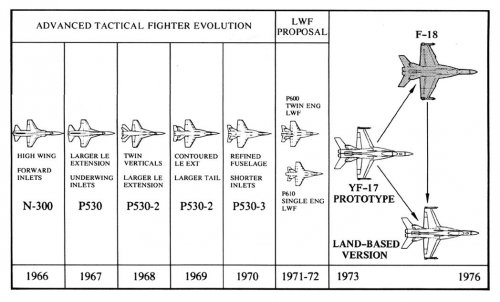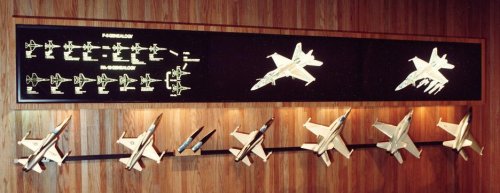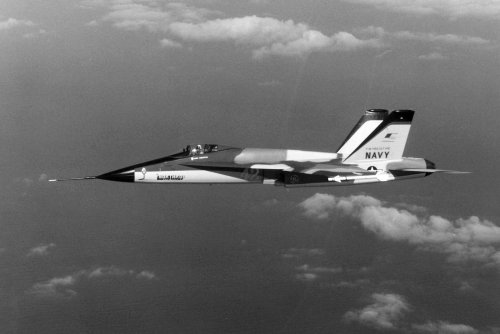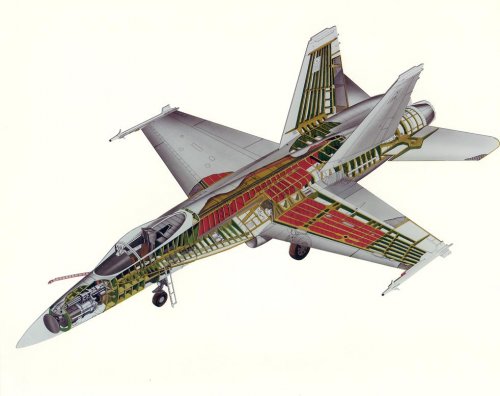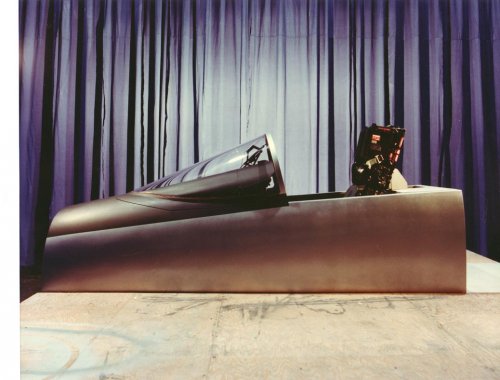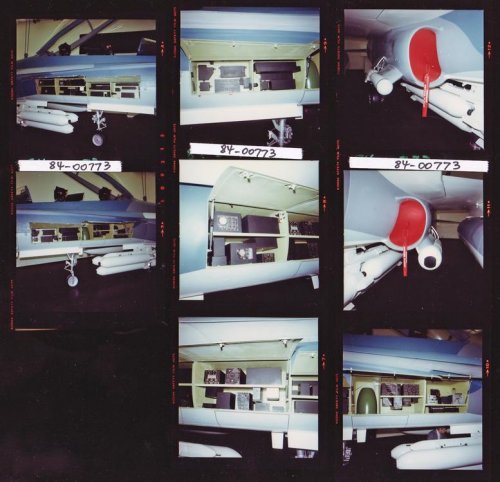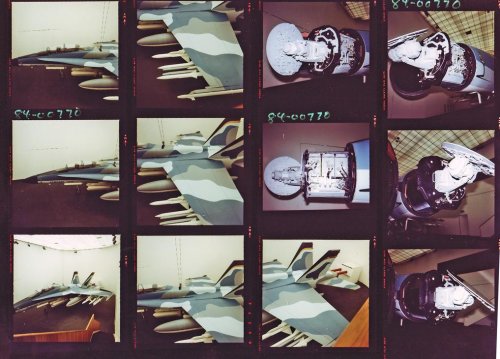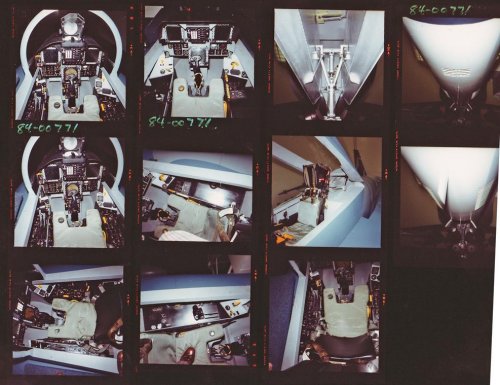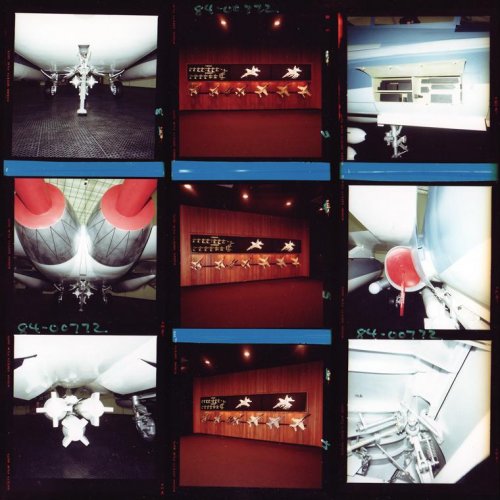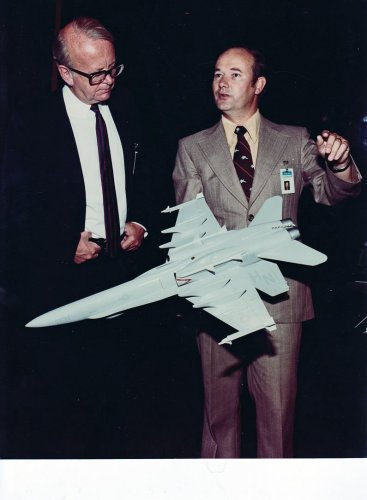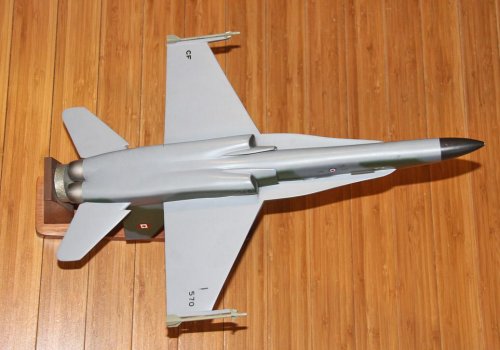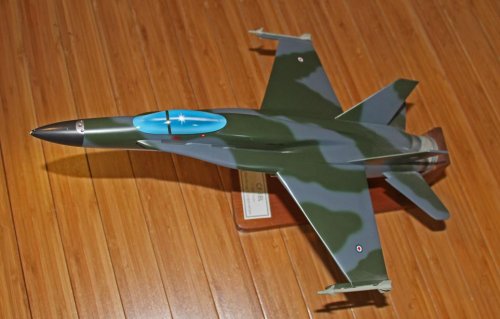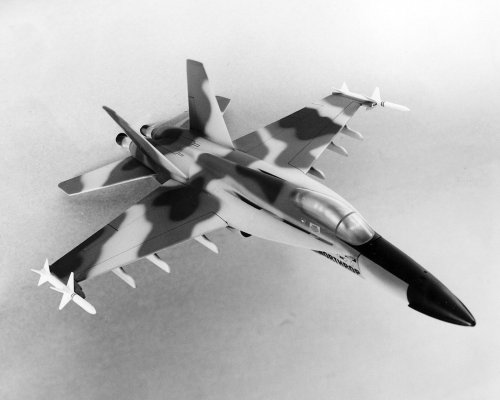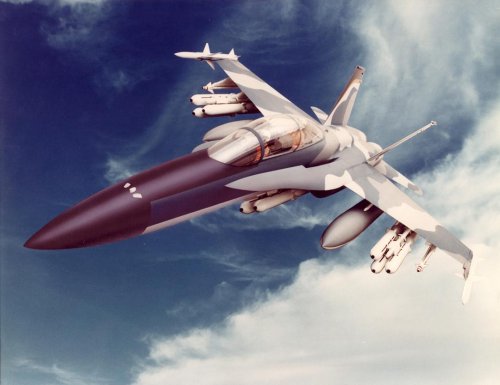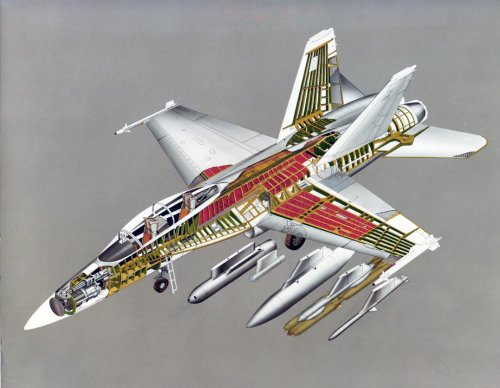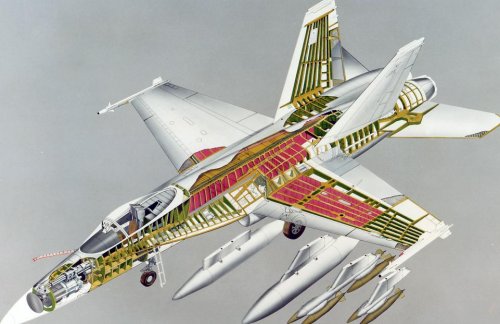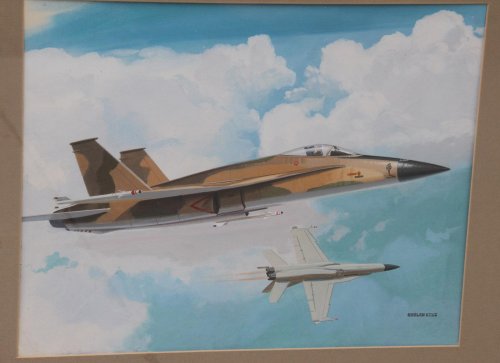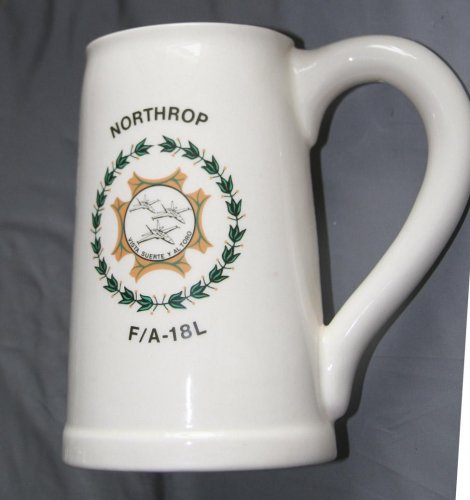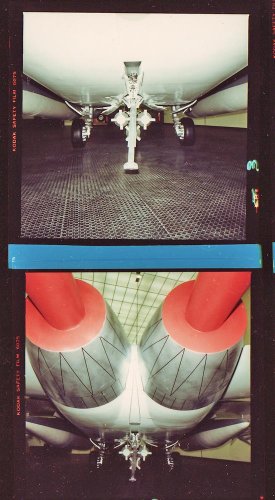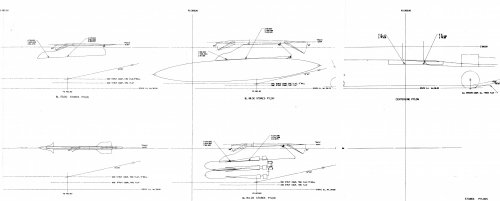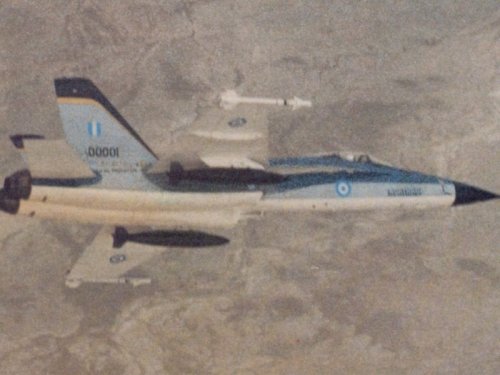The pictures of F-18L model should make an interesting comparison...
You are using an out of date browser. It may not display this or other websites correctly.
You should upgrade or use an alternative browser.
You should upgrade or use an alternative browser.
Northrop F-18L History - you can design a better mouse trap but...
- Thread starter gfi88
- Start date
- Joined
- 27 December 2005
- Messages
- 16,415
- Reaction score
- 18,964
Attachments
McDonnell Douglas A-18 Hornet model by Precise found on eBay.
URL:
http://www.ebay.com/itm/A-18-ATTACK-HORNET-W-TARGETING-PODS-LGB-/120859884708?pt=LH_DefaultDomain_0&hash=item1c23cf7ca4
Seller's description:
URL:
http://www.ebay.com/itm/A-18-ATTACK-HORNET-W-TARGETING-PODS-LGB-/120859884708?pt=LH_DefaultDomain_0&hash=item1c23cf7ca4
Seller's description:
You are bidding on a Precise model of an aircraft that never was - or if so just for a flash. As the A4 was replaced by the A7, the A7 was replaced by the Hornet - Unlike the A4 and A7 the Hornet was as much a fighter as an attack bird. Also the cost of new aircraft demanded new birds be multi-mission capable. The answer was to make it VFA - fighter -attack. This model reflects the initial attack version - please note flir and targeting pods under fuselage - and the 4 LGBs. Please also note that the wingtip missiles are not attached. In view or ease of breaking I have included 2 missiles for you to attach.
Attachments
-
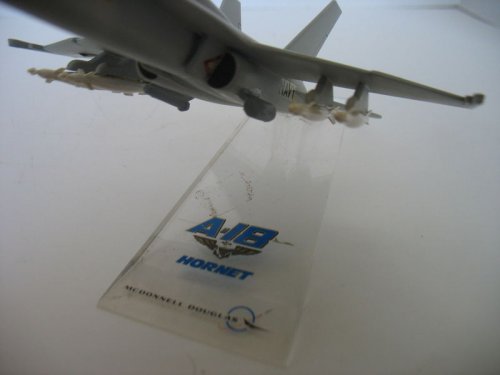 $(KGrHqFHJ!0E8e4soqqyBPOUjB,c-!~~60_3.jpg28.9 KB · Views: 461
$(KGrHqFHJ!0E8e4soqqyBPOUjB,c-!~~60_3.jpg28.9 KB · Views: 461 -
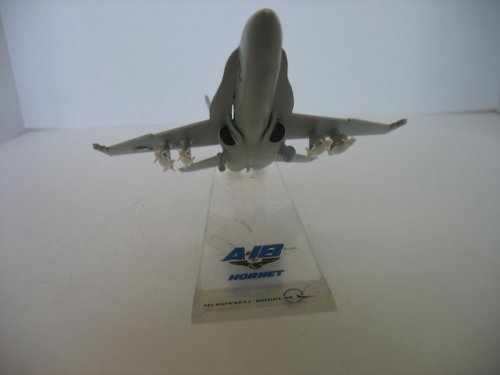 $(KGrHqNHJCME8f,NWH+CBPOUimg2fw~~60_3.jpg22.7 KB · Views: 389
$(KGrHqNHJCME8f,NWH+CBPOUimg2fw~~60_3.jpg22.7 KB · Views: 389 -
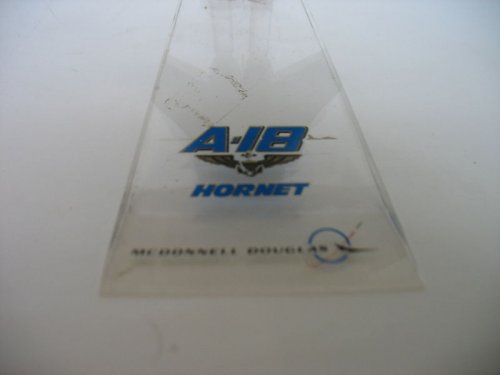 $(KGrHqVHJCUE8fjoOGVoBPOUiOmKlQ~~60_3.jpg22.2 KB · Views: 342
$(KGrHqVHJCUE8fjoOGVoBPOUiOmKlQ~~60_3.jpg22.2 KB · Views: 342 -
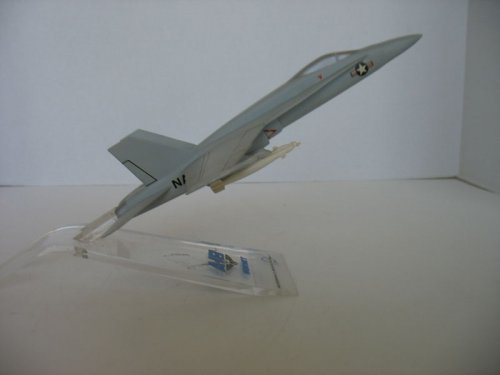 $(KGrHqNHJC0E7y7f0RKJBPOUhyTy-g~~60_3.jpg21.4 KB · Views: 361
$(KGrHqNHJC0E7y7f0RKJBPOUhyTy-g~~60_3.jpg21.4 KB · Views: 361 -
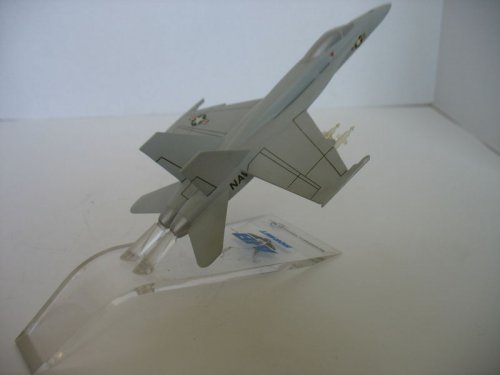 $(KGrHqNHJCME8f,NWH+CBPOUhZzM2Q~~60_3.jpg24.3 KB · Views: 354
$(KGrHqNHJCME8f,NWH+CBPOUhZzM2Q~~60_3.jpg24.3 KB · Views: 354 -
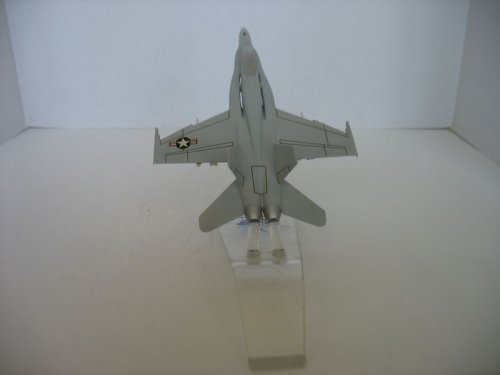 $(KGrHqRHJBoE8fG12UzUBPOUhBQ31Q~~60_3.jpg19.9 KB · Views: 354
$(KGrHqRHJBoE8fG12UzUBPOUhBQ31Q~~60_3.jpg19.9 KB · Views: 354 -
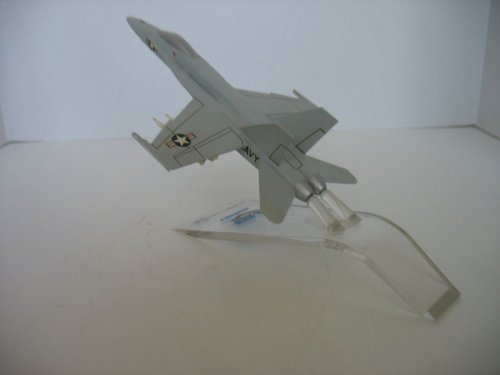 $(KGrHqFHJBsE8hZYiwKBBPOUgpjZVw~~60_3.jpg21 KB · Views: 336
$(KGrHqFHJBsE8hZYiwKBBPOUgpjZVw~~60_3.jpg21 KB · Views: 336 -
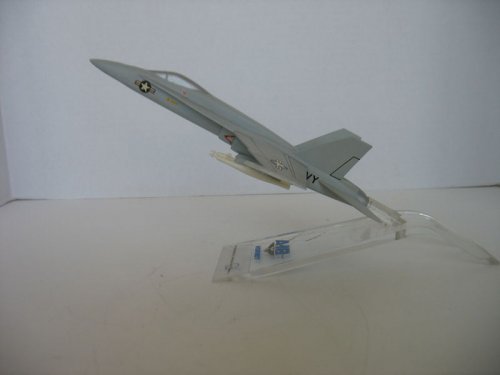 $(KGrHqUOKjcE6doIe-81BPOUgPy8b!~~60_3.jpg21.3 KB · Views: 321
$(KGrHqUOKjcE6doIe-81BPOUgPy8b!~~60_3.jpg21.3 KB · Views: 321
- Joined
- 12 May 2008
- Messages
- 223
- Reaction score
- 386
After the YF-17 lost the LWF contract for the US Air Force to the F-16, Congress directed the US Navy to look at the contenders to provide a smaller fighter/bomber complimentary to the F-14 in the same way that the F-16 complimented the F-15. Northrop painted Navy markings on the second prototype YF-17 and displayed it widely. Navy pilots spend plenty of time away from handy diversion airfields that can be used in event of an engine failure, so were partial to the twin engines and the YF-17 was selected as the basis for the F-18. Northrop had no experience with carrier-based aircraft so they teamed with the St Louis-based McAir division of McDonnell Douglas. Northrop designed and built the center fuselage, aft fuselage and vertical tails, while McAir had primary design responsibility and worked the forward fuselage, LEX, the wing and horizontal tail surfaces. In addition Northrop retained the rights to sell a land-based variant to non-Navy overseas customers.
I joined the F-18 program in 1976 as detail design was beginning so I was not party to the design iterations as the F-17 evolved into the F-18. Later some aero issues arose and the slots in the LEX changed several times, eventually disappearing, as well as saw-tooth notches in the wing and horizontal tail which came and went. A careful examination of the various pictures and models shows most of these variations.
In 1977 our primary focus was the F-18L and most of the F-18A Configuration folks moved to a new office in Plant 111 that previously housed the Northrop 747 design effort. The program was managed by Ed Jacobs and Lee Begin with Haig Asdurian as Engineering manager. The primary goal of the F-18L was to eliminate as much as possible, the extra weight added in order to provide carrier capability. At the same time most of the F-18A systems and avionics were retained. Specifically the main landing gear was changed from the kneeling cantilevered design to an oleo strut similar to the YF-17; we were also able to smooth out the mold line under the MLG tire which had been bump.ed out when the tire size was increased after the mold lines had been frozen. The nose gear was also modified to remove the launch bar and the tail hook was lightened since land-based operations are less demanding. The wing fold was eliminated and an additional outboard pylon station was provided at WS 170 with a unique pylon. The net result was the elimination of about 2500# empty weight for a significant performance improvement over the F-18A.
Pretty intense marketing was undertaken to a variety of overseas customers and Canada. A key tool was the mockup; it was built full size and mounted on a sting so that it could be rolled and pitched. Visitors were brought in to a balcony at the second level with the main room dark and were given a briefing. At the end of the brief the lights came up and visitors found that they were in a huge room with the F-18L moving before them- an impressive sight. In spite of Northrop efforts, eventually it became clear that customers felt the performance benefits were out weighed by having an aircraft common with the US Navy and it’s support infrastructure. Early on in the course of sales efforts it was noticed that McAir had been marketing the F-18A in competition with Northrop and moreover had been promising parts of the Northrop sections of the aircraft as offsets for foreign countries to produce. Northrop felt this was in violation of the agreement and a protracted lawsuit ensued. The genealogy chart was prepared as a potential trial exhibit, but the matter was eventually settled out of court. I don’t think terms were released but in early 1982 Northrop agreed to a settlement and to stop marketing the F-18L; the center/aft fuselage and vertical tails continued to be made in El Segundo. The F-18L was shelved and Northrop since that time has supported MDD and later Boeing in F/A-18 marketing and the F/A-18E/F was, and still is a successful team effort. The F-18L design group was merged with the white world Advanced Design as the YF-23 Program began.
Attachments: YF-17 in Navy colors
Control Room wall showing genealogy
Genealogy chart
F-18L Data Sheet
F-18L Mockup
I joined the F-18 program in 1976 as detail design was beginning so I was not party to the design iterations as the F-17 evolved into the F-18. Later some aero issues arose and the slots in the LEX changed several times, eventually disappearing, as well as saw-tooth notches in the wing and horizontal tail which came and went. A careful examination of the various pictures and models shows most of these variations.
In 1977 our primary focus was the F-18L and most of the F-18A Configuration folks moved to a new office in Plant 111 that previously housed the Northrop 747 design effort. The program was managed by Ed Jacobs and Lee Begin with Haig Asdurian as Engineering manager. The primary goal of the F-18L was to eliminate as much as possible, the extra weight added in order to provide carrier capability. At the same time most of the F-18A systems and avionics were retained. Specifically the main landing gear was changed from the kneeling cantilevered design to an oleo strut similar to the YF-17; we were also able to smooth out the mold line under the MLG tire which had been bump.ed out when the tire size was increased after the mold lines had been frozen. The nose gear was also modified to remove the launch bar and the tail hook was lightened since land-based operations are less demanding. The wing fold was eliminated and an additional outboard pylon station was provided at WS 170 with a unique pylon. The net result was the elimination of about 2500# empty weight for a significant performance improvement over the F-18A.
Pretty intense marketing was undertaken to a variety of overseas customers and Canada. A key tool was the mockup; it was built full size and mounted on a sting so that it could be rolled and pitched. Visitors were brought in to a balcony at the second level with the main room dark and were given a briefing. At the end of the brief the lights came up and visitors found that they were in a huge room with the F-18L moving before them- an impressive sight. In spite of Northrop efforts, eventually it became clear that customers felt the performance benefits were out weighed by having an aircraft common with the US Navy and it’s support infrastructure. Early on in the course of sales efforts it was noticed that McAir had been marketing the F-18A in competition with Northrop and moreover had been promising parts of the Northrop sections of the aircraft as offsets for foreign countries to produce. Northrop felt this was in violation of the agreement and a protracted lawsuit ensued. The genealogy chart was prepared as a potential trial exhibit, but the matter was eventually settled out of court. I don’t think terms were released but in early 1982 Northrop agreed to a settlement and to stop marketing the F-18L; the center/aft fuselage and vertical tails continued to be made in El Segundo. The F-18L was shelved and Northrop since that time has supported MDD and later Boeing in F/A-18 marketing and the F/A-18E/F was, and still is a successful team effort. The F-18L design group was merged with the white world Advanced Design as the YF-23 Program began.
Attachments: YF-17 in Navy colors
Control Room wall showing genealogy
Genealogy chart
F-18L Data Sheet
F-18L Mockup
Attachments
That last photo is interesting. It is the first time I can recall seeing large missiles mounted on the wingtips of a Hornet.
- Joined
- 12 May 2008
- Messages
- 223
- Reaction score
- 386
Here are pix of the mockup in detail. The first image has Sparrows on the wingtips and a single slot in the LEX. In the detail shots (1984) we are back to an AIM-9 on the tips. The cutaway shows a snag in the horizontal.
Attachments
O
Overkiller
Guest
Superb pictures!
Dare I ask...is there a three view drawing of the F-18L anywhere? It would make for a subtly different model build...
Duncan
Dare I ask...is there a three view drawing of the F-18L anywhere? It would make for a subtly different model build...
Duncan
- Joined
- 12 May 2008
- Messages
- 223
- Reaction score
- 386
A couple more cutaways similar to the other but with different stores load outs. The two place has a recce pod. Image 0009 is an artist's in-flight impression made from a photo of the mock up in 1981. Image 0010 is interesting; it was made in 1976 and shows the YF-17 mockup with a simple curved LEX with 3 slots and again Sparrows on the tips. The next two are of a model of the Canadian CF-18L with three LEX slots and a snag in the tail; the second shows the smoothly contoured underside.
Attachments
- Joined
- 12 May 2008
- Messages
- 223
- Reaction score
- 386
And last but not least the Harlan Krug original I rescued from the trash as the program folded and a liter tankard made by marketing for the Spanish. The Krug painting has a wing snag but none on the tail!
Attachments
- Joined
- 12 May 2008
- Messages
- 223
- Reaction score
- 386
Three View. There was one made but it was pretty simple since the aircraft would have been identical externally to the F/A-18A except for a smooth underside different main gear door trim lines and a smaller hook. The variations mentioned above were due to McAir changing their parts of the plane. I do have a stores clearance drawing which has the gear doors and the third wing pylon on it that I could scan. I kept it because it was the last drawing I ever made on the board.
- Joined
- 12 May 2008
- Messages
- 223
- Reaction score
- 386
S
sublight
Guest
Hey Bill, the Wikipedia article says "The F-18L's maximum gross weight was 7,700 pounds". That is REALLY light, is that number correct?
- Joined
- 27 December 2005
- Messages
- 16,415
- Reaction score
- 18,964
Thanks Bill - I added a couple of F-18L posts from Northrop P-530 / P-600 / P-610 / YF-17 Design Evolution topic.
- Joined
- 27 December 2005
- Messages
- 16,415
- Reaction score
- 18,964
sublight said:Hey Bill, the Wikipedia article says "The F-18L's maximum gross weight was 7,700 pounds". That is REALLY light, is that number correct?
Try reading more closely...
http://en.wikipedia.org/wiki/McDonnell_Douglas_F/A-18_Hornet#Northrop.27s_F-18L
The F-18L's maximum gross weight was 7700 pounds (3490 kg) (approximately 30%) lighter than the F/A-18A
- Joined
- 27 December 2005
- Messages
- 16,415
- Reaction score
- 18,964
I just noticed that the P530 sans suffix in the genealogy chart looks exactly like the N-300A-43 model in American Secret Projects.
- Joined
- 27 December 2005
- Messages
- 16,415
- Reaction score
- 18,964
- Joined
- 27 December 2005
- Messages
- 16,415
- Reaction score
- 18,964
http://imageshack.us/photo/my-images/73/f18lgz5.jpg/
The only known image of the prototype with Hellenic air force roundels. It was painted like that during the selection of HAF s 3rd gen fighter in mid 80's.
Btw it was the pilots favorire (no internal fuel tanks in the wings- ultra manouvrable), but HAF went for the no2 (F-16C) (and ..no3 Mirage 2000)
The only known image of the prototype with Hellenic air force roundels. It was painted like that during the selection of HAF s 3rd gen fighter in mid 80's.
Btw it was the pilots favorire (no internal fuel tanks in the wings- ultra manouvrable), but HAF went for the no2 (F-16C) (and ..no3 Mirage 2000)
Attachments
- Joined
- 27 December 2005
- Messages
- 16,415
- Reaction score
- 18,964
o be clear. its the YF-17. No actual F-18L was built.
overscan said:o be clear. its the YF-17. No actual F-18L was built.
You may be right. Dont know much technical details about the YF-17 prototype, but the plane the pilots flown then didnt have internal fuel tanks in the wings (as i told you b4) and also couldnt carry Sparrows AA missiles attached to the fusselage like US navys F/A-18s. Word was that it could maintain controled flight at extreme high- Alphas (angle of attack) unheard of western fighters that time thus the pilots favorite. sry for my English btw
Lascaris
ACCESS: Secret
- Joined
- 14 November 2008
- Messages
- 271
- Reaction score
- 312
Yup. There were 5 contenders (F-18L, F/A-18, F-16, Mirage 2000, Tornado) for what was initially planned to be an 160 aircraft deal with production locally in Greece. The number was lowered to initially 120 when the socialists came to power. HAF preferred a two engined fighter as it would be operating primarily over the Aegean and Eastern Mediterranean, Tornado was eliminated early on as we were looking primarily for an air superiority fighter and of the two F-18 variants F-18L was superior both in performance and the industrial package Northrop was offering I understand.
The then chief of the air force in his published memoirs explicitly says that F-18L had come first in the air force evaluation but that the government for "strategic/diplomatic" reasons chose to split the deal between F-16 and Mirage 2000. Which managed to kill any idea of local production in Greece and for good measure allowed buying only 80 aircraft in the initial batch instead of the 100 that could had been bought otherwise. To add insult to injury afterwards Greece went ahead and bought a further 130 F-16s and 15 Mirage 2000-5s. Had it stuck with F-18L it would both had gotten a better fighter early on and given a massive boost to her then fledgling aerospace industry which has gone to nowhere in the meantime.
The then chief of the air force in his published memoirs explicitly says that F-18L had come first in the air force evaluation but that the government for "strategic/diplomatic" reasons chose to split the deal between F-16 and Mirage 2000. Which managed to kill any idea of local production in Greece and for good measure allowed buying only 80 aircraft in the initial batch instead of the 100 that could had been bought otherwise. To add insult to injury afterwards Greece went ahead and bought a further 130 F-16s and 15 Mirage 2000-5s. Had it stuck with F-18L it would both had gotten a better fighter early on and given a massive boost to her then fledgling aerospace industry which has gone to nowhere in the meantime.
- Joined
- 21 May 2006
- Messages
- 2,703
- Reaction score
- 1,604
Wow another great forum on a design I love, in which I have somehow overlooked 
As for me ....... I think it a great pity that 1/ Northrop got stooged by McDonnell Dougles re the whole Hornet deal, 2/ I think it was a great pity and loss that Northrop never pursude the light-weight, de-carrierized and simpler F-18L :'(
I have always thought the RAAF (and in that case RCAF and Spanish Air Force for that matter) should have gone with the F-18L, as opposed to the carrier-based F/A-18A/B Hornet.
Apart from the already pointed out weight savings in removing carrier-based operational gear, lighter landing gear, and a stronger 'all wet' non folding wing ..... etc.
I can not help picture the added air-to-air capability of the lighter and simpler F-18L, when as per the natural develpment progress of the 'legacy' F/A-18A/B to that of the F/A-18C/D, with its more powerful F404-GE-402 engines (along with Aim-120 and Aim-132 ........etc), which if married to later model (or upgraded) F-18L, would have in my opinion not made the RAAF's concerns about its 'legacy' F/A-18A/B's not being up to the air-to-air capability it deems them to meet the challenge of the likes of the Flanker/Fulcrum now poliferal in the area!!
Regards
Pioneer
As for me ....... I think it a great pity that 1/ Northrop got stooged by McDonnell Dougles re the whole Hornet deal, 2/ I think it was a great pity and loss that Northrop never pursude the light-weight, de-carrierized and simpler F-18L :'(
I have always thought the RAAF (and in that case RCAF and Spanish Air Force for that matter) should have gone with the F-18L, as opposed to the carrier-based F/A-18A/B Hornet.
Apart from the already pointed out weight savings in removing carrier-based operational gear, lighter landing gear, and a stronger 'all wet' non folding wing ..... etc.
I can not help picture the added air-to-air capability of the lighter and simpler F-18L, when as per the natural develpment progress of the 'legacy' F/A-18A/B to that of the F/A-18C/D, with its more powerful F404-GE-402 engines (along with Aim-120 and Aim-132 ........etc), which if married to later model (or upgraded) F-18L, would have in my opinion not made the RAAF's concerns about its 'legacy' F/A-18A/B's not being up to the air-to-air capability it deems them to meet the challenge of the likes of the Flanker/Fulcrum now poliferal in the area!!
Regards
Pioneer
- Joined
- 25 June 2009
- Messages
- 13,746
- Reaction score
- 2,932
Pioneer said:I think it a great pity that 1/ Northrop got stooged by McDonnell Dougles re the whole Hornet deal, 2/ I think it was a great pity and loss that Northrop never pursude the light-weight, de-carrierized and simpler F-18L :'(
Especially considering that after all the mergers, Boeing have the B-1, F-15 and F-18 on their hands, Lockheed Martin have the F-22 and F-35 but Northrop Grumman have just the B-2, and NO manned fighter whatsoever.
Grumman Guy
ACCESS: Restricted
- Joined
- 10 June 2011
- Messages
- 4
- Reaction score
- 2
Well NGC did have the F-14 but obviously politics had other ideas about that aircrafts further developement.
- Joined
- 3 October 2007
- Messages
- 1,962
- Reaction score
- 1,028
You know, one other thing I haven't seen mentioned here...On the P-530/P-600/YF-17, I believe the main gear was mounted somewhat further forward. When the design was evolved into the F/A-18, the gear was moved aft somewhat. This was to make the aircraft more stable on a pitching, wet deck. However, what wasn't fully appreciated in the design that this would also have the effect of shortening the moment arm.
The problem this caused was that the horizontal stabilizer as designed no longer had sufficient downward force to lift the nose at the desired VR speed. To overcome this through normal methods could be quite expensive and would add weight. Since the Hornet wasn't yet the"Golden Child" it became, this could have proved embarrassing and could threaten the program. The solution chosen was actually quite innovative and although I don't really know who first proposed it, I'll bet it was Northrop. What they did was that when the stick was pulled aft when there was weight on wheels, the rudders would both toe in. This gave sufficient extra downward force at the rear to provide the desired rotational force at virtually no increase in weight. Quite clever.
I believe the F-18L retained the original location of the main gear, so this extra complexity was not needed.
Or so I sorta remember.
The problem this caused was that the horizontal stabilizer as designed no longer had sufficient downward force to lift the nose at the desired VR speed. To overcome this through normal methods could be quite expensive and would add weight. Since the Hornet wasn't yet the"Golden Child" it became, this could have proved embarrassing and could threaten the program. The solution chosen was actually quite innovative and although I don't really know who first proposed it, I'll bet it was Northrop. What they did was that when the stick was pulled aft when there was weight on wheels, the rudders would both toe in. This gave sufficient extra downward force at the rear to provide the desired rotational force at virtually no increase in weight. Quite clever.
I believe the F-18L retained the original location of the main gear, so this extra complexity was not needed.
Or so I sorta remember.
Grumman Guy
ACCESS: Restricted
- Joined
- 10 June 2011
- Messages
- 4
- Reaction score
- 2
Very interesting, I always wondered why both rudders were toed in on take off and carrier launches.
- Joined
- 13 June 2007
- Messages
- 2,024
- Reaction score
- 2,225
Interesting as we (at the Museum) just talked about this not too long ago. Our curator was head aero at McDonnell Douglas when he retired in 1992 and was heavily involved in the F-18/A-18/F/A-18 development prior to that. The main gear was moved back to meet a Navy tip back requirement and the nose wheel lift off problem was predicted but not addressed prior to testing. He was the one who came up with the idea for toe in of the rudders and McDonnell Douglas had to work hard to get the Navy to accept it.
HTH! Mark
HTH! Mark
The mockup shows wing mounted Sparrows. Was the wing strengthened that much without the folding mechanisms to accommodate sparrows? Also were there ever any official stats comparing it to the F/A-18A-D in air/air combat? The fact that it was already a 2 seater must have had some appeal to the nations it was marketed to.
- Joined
- 6 November 2010
- Messages
- 4,223
- Reaction score
- 3,143
Typical government behaviour.Mark Nankivil said:...main gear was moved back to meet a Navy tip back requirement and the nose wheel lift off problem was predicted but not addressed prior to testing. He was the one who came up with the idea for toe in of the rudders and McDonnell Douglas had to work hard to get the Navy to accept it.
HTH! Mark
- Joined
- 17 October 2006
- Messages
- 2,281
- Reaction score
- 604
Memory lane indeed. The approach speed and runway length numbers from the fact sheet would have appealed to the Swedes...
- Joined
- 3 October 2007
- Messages
- 1,962
- Reaction score
- 1,028
Arjen said:Typical government behaviour.Mark Nankivil said:...main gear was moved back to meet a Navy tip back requirement and the nose wheel lift off problem was predicted but not addressed prior to testing. He was the one who came up with the idea for toe in of the rudders and McDonnell Douglas had to work hard to get the Navy to accept it.
HTH! Mark
Are you referring to the tip back requirement? That's a valid one. Navy often parks jets with their tails out over the ocean to maximize usable deck space, and chained or unchained, that's a lot of downward force aft of the MLG. Planes falling backward into the sea are considered a Bad Thing. Also, the deck of a carrier pitches and rolls. This is not something landbased aircraft have to be concerned about, except for brief occurrences in California. Even if not falling into the sea, a plane that falls back on its butt is considered a Bad Thing.
The toe-in thing is clever, but nontraditional, sort of like the way Northrop solved the gear raise problem on the F-5E/F-20. Since they were betting a lot on the Hornet, it's not too surprising that the Navy was cautious. If it hadn't worked (takeoff run from here to Mexico), it would have been very embarrassing, not to mention expensive to fix further down the program. Why, it'd be like an arresting hook that couldn't catch a wire!
Similar threads
-
Big-wing F-5s and F-5G/F-20 alternative designs
- Started by BillRo
- Replies: 102
-
-
-
-
Northrop P-530 / P-600 / P-610 / YF-17 Design Evolution
- Started by Pioneer
- Replies: 167

